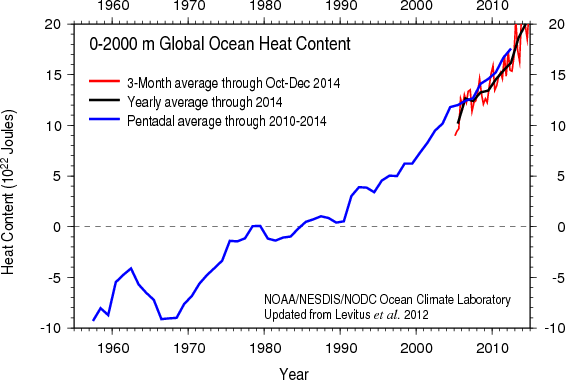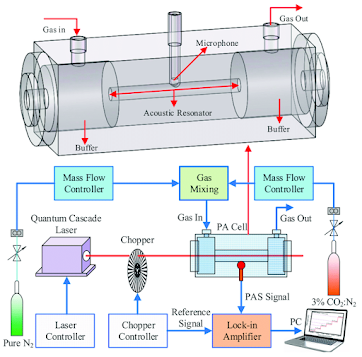As readers of Rabett Run know, Eli has been. . . well Eli has been rather doubtful of the approach taken by the APS.
Taylor reports on the goings on
I hope that I can reassure you with an emphatic and wide-awake denial of any tendency to drowse during POPA proceedings (although some of my co-panelists might have wished I had taken a nap or two as the discussions became more pointed). The reason for my silence lies in the familiar sausage-factory analogy: if you want to have confidence in the final product, it is best not to observe the manufacturing process too closely. We were enjoined to silence on the minutiae of the discussions. My lips are thus sealed as far as describing the contents of successive drafts and iterations, and what relation they bear to the 2007 statement.However this does not cover the process. As bunnies may recall, POPA self selected a group of refugees from the nuclear complex to review the statement on climate change, held a farcical panel of experts hearing featuring Richard Lindzen, Judith Curry and John Christy on one side and Isaac Held, Ben Santer and William Miller on the other which only exposed the naivety of the drafting committee members about climate science, and then were surprised when the head of that committee, Steve Koonin went Wall Street Journal nuclear on them.
This rumbling drumbeat of public commentary continued through the summer, as an enlarged subgroup of POPA continued its efforts. An impartial observer with no inside knowledge of the inner workings of POPA might conclude that matters came to a head in September with the publication in the Wall Street Journal of an Op-Ed piece by no other than Steve Koonin himself. It was entitled “Climate Science Is Not Settled”. This was met with a forceful rebuttal from Raymond Pierrehumbert, a professor in geophysical sciences at the University of Chicago, who then commented on the procedures that the APS had adopted for reviewing the 2007 statement. He opined that “The choice of its drafting committee indicates some serious problems with the APS process for its climate change statement, as the committee did not include a single physicist who was actually doing work in the area of climate science. Given that, one might think the committee would avail itself of the opportunity to become better educated through hearing from the best and most representative experts the field has to offer.” Eli Rabett, following an earlier post in which he says that the APS “might as well have picked a bunch of squeegee guys from off the street” for its review subcommittee, makes some even more forceful but less reprintable comments, and includes rumors of Steve Koonin's resignation from POPA, a conjecture confirmable by the disappearance of his name from the APS POPA web site.
What you say Eli, something interesting in committee. Well yes, but only by inference and more will be known after the October 2014 and January 2015 POPA meeting minutes are posted. First, let us set the stage from the February 2014 meeting minutes, a meeting so fracticous the the minutes were only posted after the October meeting, having been rejected in June. The October meeting minutes which will should be posted in after the January meeting may be similarly interesting.
The February 2014 meeting was held a month after drafting subcommittee had met with the 3/97 and 3/3 experts representing both sides. John Oliver had it right. At that point Steve Koonin was chair to be of POPA and chair of the drafting committee
Climate Change Statement Review
Background information and an overview of the progression of the review was provided.
A “minimal statement” on climate science was presented. Discussion ensued on the science issues related to climate change. POPA was presented with the actions up for debate, including:
(1) The format POPA should employ to keep membership updated on the review process;
(2) Deciding on alternatives to the “minimal statement” on climate science.
It was decided that a webpage dedicated to the review process would be produced. APS Staff and the Review Subcommittee were tasked with reworking a webpage mock-up within the week, to be presented electronically to POPA for comment and a vote. Four alternatives to the “minimal statement” were presented:
(1) Retaining the existing statement;
(2) Recommending the null statement;
(3) Recommending a new (non-null) statement;
(4) Writing a new statement that would accompany the current statement.
MOTION: To strike the option of retaining the existing APS Climate Change Statement from the possible options of how to proceed.
Other options that were discussed and are still available: “the null statement”, a new statement that replaces the current statement, a new statement that would accompany the current statement. (Barletta/Rosner)
First, Eli will speculate that the "minimal" statement was a lukwarmers special pushed by Koonin and maybe Rossner of the type more research is needed. But allow the Rabett to point out that this is only speculation. The rejection of the 2007 statement as a basis for further discussion is may mark a point of divergence for the POPA from just about every other scientific society on earth (maybe not the geologists).ACTION: Motion carried (15 for, 4 against)
The next motion is a not so gentle nudge to the drafting committee that they need to get their shit in order without quite saying so. This is, of course, Eli's opinion.
MOTION: To have the Climate Change Statement Review subcommittee revise the statement in light of the discussion at the February 7, 2014 POPA meeting. (Rosner)
Amendment: To also have the subcommittee include recommendations on how they envision the process moving forward and the technical pieces that will be included. (Rosner accepted the amendment.)
Amendment: To request that the subcommittee consult with the steering committee and other experts from the climate science community, as well as interested POPA members, as they revise the statement. (Rosner accepted the amendment.)
To have the Climate Change Statement Review subcommittee revise the statement in light of the discussion at the February 7, 2014 POPA meeting and to include recommendations on how they envision the process moving forward and the technical pieces that will be included. They should consult with the steering committee and other experts from the climate science community, as well as interested POPA members, during the revision process. (Rosner/Barletta)
: Passed unanimouslyNow some, not Eli to be sure, might wonder what part of the drafting committee's drafting was front ended by Koonin, but without being in the room it is not possible to really say.
However this brings the bunnies to the June 2014 meeting the minutes of which start
Concerns were raised over the accuracy of the February 7, 2014 meeting minutes. Discussions were overly paraphrased and incomplete; charts referenced were not included. It was generally agreed that a higher-level perspective of the meeting was not captured.and then goes on to deal with the Committee to Mess About the APS Statement on Climate Change
Climate Change Statement
The POPA Energy and Environment Subcommittee reported its review of the Climate Change Review Subcommittee’s draft statement and proposed an alternative for POPA’s consideration. There was discussion regarding the statement drafting process and how the E&E Subcommittee arrived at its proposal. A motion was presented by the E&E Subcommittee to adopt its draft statement, subject to a set of amendments suggested by POPA members, as the framework for further work on a final draft statement. This motion was opened for discussion.The Energy and Environment Subcommittee is a larger subcommittee of POPA with a significant representation of DOE lab directors and other worthies. The subtext here is they did not like what the drafting committee had drafted and that the Koonin directed drafting committee had probably not taken the hint to consult and modify. This, of course, is all supposition on Eli's part. The E&E committee provided its own draft, which again bunnies may believe was significantly different from the drafting committee's draft.
Six amendments were offered, each briefly introduced by a subcommittee member. After discussion, each motion was defeated.
A POPA member presented the case for keeping the current APS Climate Change Statement in place. A motion was then made to amend the motion on the floor by substitution.
The amendment proposed to replace the E&E Subcommittee draft with a draft statement –– referred to as the “Tri-Statement” –– more closely aligned with the original Climate Change Review Subcommittee’s draft statement.Tri WHAT, well there appear to be three drafts in play. First the draft of the drafting committee, then the draft of the E&E committee and finally the official 2007 APS statement. Rabett runners might assume that this Tri-Statement is a melange, aka a camel trying to look like a horse made up of the three. But again this is a suppository.
The amendment was discussed, the question was called, and the motion to amend carried without opposition. The Tri-Statement was debated and a motion to make it the foundational statement upon which continued work would proceed was made. The motion carried unanimously.
Finally a motion to refer the “Tri-Statement” to committee for further refinement in light of the extensive discussions that occurred throughout the meeting was presented. The committee, which would be known as the “Plenary Group”, would include all members of the Energy & Environment Subcommittee as well as members of the original drafting group (the Climate Change Statement Review subcommittee). The motion passed unanimously.and here comes the hammer. The four on the drafting committee less Koonin maybe are now overwhelmed by the eight more from the E&E committee two of whom are on both. Well, let's wait and see what the October and January meeting bring and brought.
UPDATE: Note that it was a couple of months AFTER the June 2014 POPA meeting and probably AFTER some "Plenary Group" meetings that Koonin went to the WSJ and let it all hang out. Bunnies may speculate that things did not go well for his POV in those meetings.
The moral of all this, of course, is that the arrogance of the APS has brought them to this impasse where, no matter what they do, they expose their incompetence. Perhaps they will learn. OTOH they are physicists and perhaps not.











